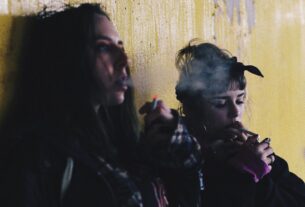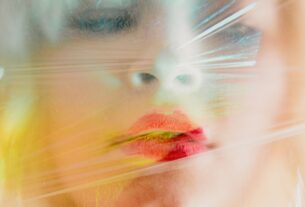Cacophobia: The Pathology of Beauty’s Darkest Fear, The Ugliness
Cacophobia, a relatively obscure yet deeply unsettling psychopathological condition, is the irrational and paralyzing fear of ugliness. This anxiety disorder, cataloged under specific phobias in the DSM-5, manifests in visceral reactions to perceived physical or aesthetic deformity. Sufferers experience acute dysphoria, tachycardia, hyperhidrosis, and, in extreme cases, derealization episodes when confronted with visual stimuli they deem unattractive. The phobia is not merely an aversion but a debilitating dread that permeates cognitive and behavioral responses, disrupting social interactions and daily life.
Origins of the Fear: The Haunting of the Self
At its core, cacophobia is an ontological disturbance—a crisis of identity and existential validation. The fear of ugliness extends beyond the external world; it ricochets inward, unearthing repressed insecurities about self-worth and acceptance. Rooted in evolutionary biology, the human predisposition toward symmetrical and aesthetically pleasing features is a survival heuristic, an unconscious mechanism for mate selection and social belonging. However, when distorted by traumatic conditioning or socio-cultural pressures, this innate preference mutates into pathological revulsion.

The very etymology of the word “caco” provides insight into its deep-rooted association with revulsion. The term is derived from the Greek kakos, meaning bad or evil, but its connection extends further into common linguistic usage. The word “caca,” or “kaka,” is a widespread term for excrement in many languages, reinforcing the instinctive association between filth, disgust, and ugliness. Even the military term “khaki,” referring to the brownish-green camouflage uniform, stems from the same root—kaka—suggesting an inherent link between the color of waste and something undesirable or utilitarian. This etymological connection underscores the visceral, almost primal, reaction to perceived unattractiveness, intertwining language, psychology, and evolutionary aversion.
Psychoanalytic interpretations posit that cacophobia stems from an unresolved Oedipal conflict, wherein beauty symbolizes the unattainable maternal ideal, and ugliness becomes the grotesque representation of castration anxiety. Cognitive-behavioral frameworks suggest that early childhood experiences—perhaps ridicule, bullying, or excessive exposure to idealized media portrayals—establish neural pathways associating unattractiveness with existential failure. In the postmodern condition, where self-worth is commodified and aesthetic perfection equates to success, cacophobia thrives as a neurotic symptom of late-stage capitalism.
Psychological Authorities on Cacophobia
Despite its underrepresentation in mainstream psychology, several intellectuals have broached the subject indirectly. Sigmund Freud’s The Uncanny (1919) alludes to the dread evoked by the grotesque and misshapen, suggesting a latent fear of the unfamiliar within the familiar. Carl Jung, in his discussions on the shadow self, theorized that revulsion toward perceived ugliness might stem from an individual’s rejection of their repressed, imperfect aspects. More contemporary scholars like Albert Ellis, with his Rational Emotive Behavior Therapy (REBT), discuss the role of irrational beliefs in reinforcing aesthetic anxieties.
Cacophobia in Literature and Film: The Mirror Cracks
Few fears are as universally exploited in literature and cinema as the terror of ugliness. Victor Hugo’s The Hunchback of Notre-Dame (1831) presents Quasimodo as a tragic figure, loathed for his deformity yet possessing a soul richer than his aesthetically pleasing adversaries. Quasimodo represents the ultimate paradox of beauty and ugliness—the grotesque facade that masks the deepest, most profound compassion and love. His existence in the cathedral, hidden from the world’s judgment, reflects the isolating effects of cacophobia. Despite his physical appearance, his heart eclipses that of those who scorn him, making him the ultimate testament to the fallacy of aesthetic judgment.
Oscar Wilde’s The Picture of Dorian Gray (1890) delves into the existential horror of physical decay, encapsulating the dread of ugliness as a manifestation of moral and psychological corruption.
A search for perfection, or fear of perfection?
Equally compelling is the myth of Pygmalion, the sculptor who fell irreversibly in love with his own creation. In Ovid’s Metamorphoses, Pygmalion carves a statue so perfect that no living woman could compare. His devotion to an artificial construct, an idealized form untouched by the imperfections of flesh, reveals a pathological detachment from reality—an extreme manifestation of aesthetic obsession. Pygmalion’s story mirrors the modern condition of those who seek beauty not in the organic and flawed, but in the pristine, lifeless fantasy of their own making. His love is not for the statue itself but for the reflection of his imagination within the stone, a psychological fixation that echoes through contemporary struggles with unattainable beauty standards and the rejection of anything deemed imperfect.
A fascinating real-world parallel to this theme is found in an unusual case involving a pedigree mare and a stallion who refused to copulate with her. Despite her genetic superiority and physical perfection, the stallion showed no interest. Only when the farmers smeared her body with mud, masking her flawless coat with perceived imperfection, did the stallion become eager to mate. This curious incident underscores a profound psychological truth—perfection, in its sterile and untouchable form, can be alienating, while imperfection, with its raw and unfiltered reality, can be deeply alluring. This phenomenon mirrors human attraction dynamics, where idealized beauty often feels unattainable and artificial, while flaws create relatability, warmth, and authenticity.
Cinema, too, has capitalized on cacophobia’s sinister grip. In The Elephant Man (1980), John Merrick’s disfigured visage renders him a social pariah, while his inner humanity surpasses that of his so-called civilized tormentors. One of the most poignant lines comes from Beauty and the Beast (1991): “She warned him not to be deceived by appearances, for beauty is found within.” This line encapsulates the cognitive dissonance of cacophobia—the recognition that external aesthetics are ephemeral, yet the visceral fear persists.
Overcoming Cacophobia: The Unmasking of the Psyche
The remediation of cacophobia necessitates an integrative approach, one that dismantles cognitive distortions and reconditions neural responses. Exposure therapy, a staple of cognitive-behavioral intervention, gradually acclimates patients to their triggers, desensitizing their exaggerated autonomic responses. Psychodynamic therapy excavates the unconscious roots of the phobia, allowing for the reintegration of the repressed shadow self. Pharmacological interventions, such as selective serotonin reuptake inhibitors (SSRIs) and benzodiazepines, may alleviate acute symptomatic distress, but they do not address the existential crisis underlying the disorder.
Beyond clinical interventions, a philosophical paradigm shift is crucial. Friedrich Nietzsche’s amor fati—embracing life’s imperfections—offers an antidote to the pathology of aesthetic obsession. In the words of Bukowski himself: “If you’re going to try, go all the way. Otherwise, don’t even start.” Cacophobia, at its essence, is the fear of confronting life’s unfiltered reality. The cure? To strip away illusion, to stare into the abyss, and to find beauty—not in symmetry, but in the grotesque dance of existence itself.



